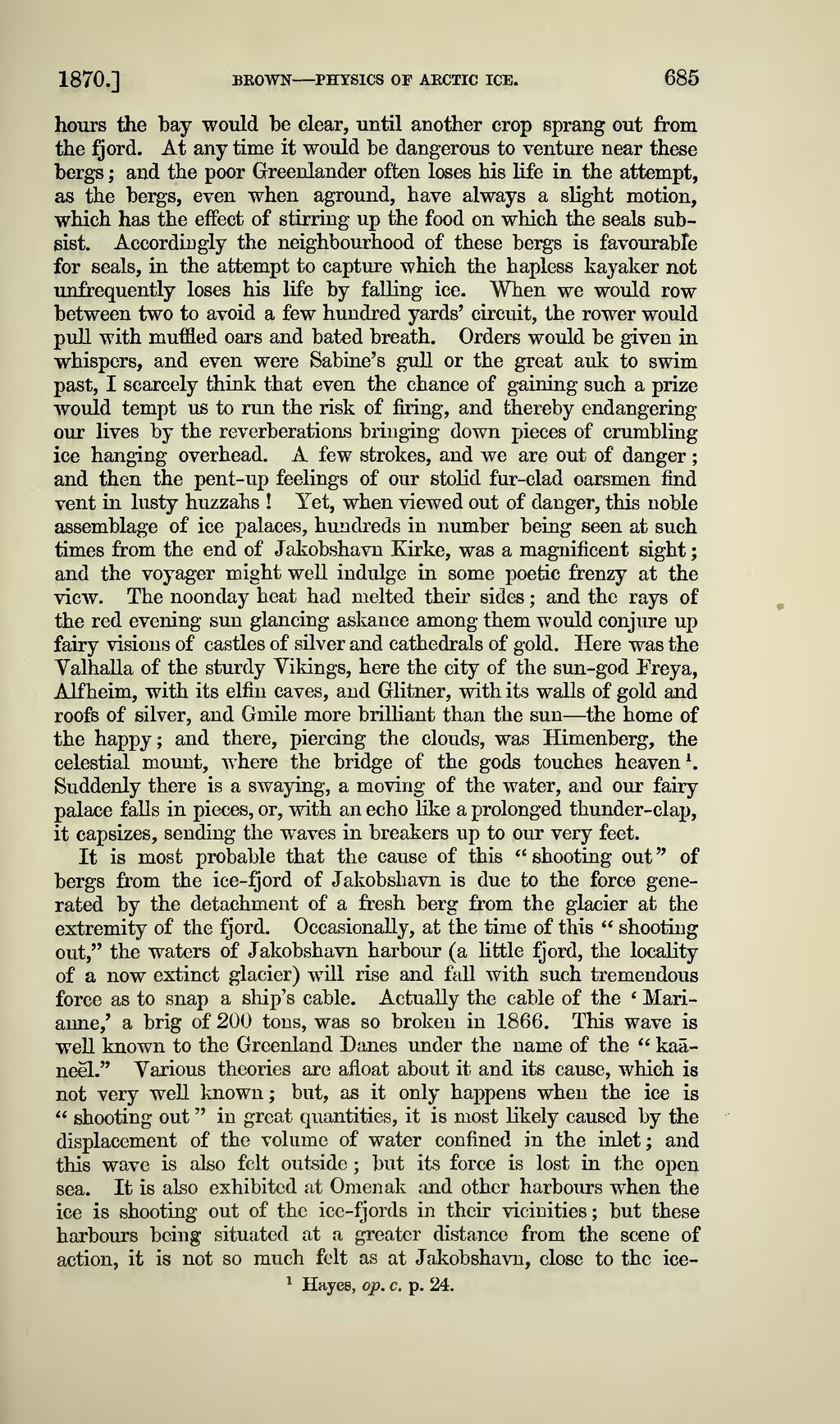hours the bay would be clear, until another crop sprang out from the fjord. At any time it would be dangerous to venture near these bergs ; and the poor Greenlander often loses his life in the attempt, as the bergs, even when aground, have always a slight motion, which has the effect of stirring up the food on which the seals subsist. Accordingly the neighbourhood of these bergs is favourable for seals, in the attempt to capture which the hapless kayaker not unfrequently loses his life by falling ice. When we would row between two to avoid a few hundred yards' circuit, the rower would pull with muffled oars and bated breath. Orders would be given in whispers, and even were Sabine's gull or the great auk to swim past, I scarcely think that even the chance of gaining such a prize would tempt us to run the risk of firing, and thereby endangering our lives by the reverberations bringing down pieces of crumbling ice hanging overhead. A few strokes, and we are out of danger ; and then the pent-up feelings of our stolid fur-clad oarsmen find vent in lusty huzzahs ! Yet, when viewed out of danger, this noble assemblage of ice palaces, hundreds in number being seen at such times from the end of Jakobshavn Kirke, was a magnificent sight ; and the voyager might well indulge in some poetic frenzy at the view. The noonday heat had melted their sides ; and the rays of the red evening sun glancing askance among them would conjure up fairy visions of castles of silver and cathedrals of gold. Here was the Valhalla of the sturdy Vikings, here the city of the sun-god Freya, Alfheim, with its elfin caves, and Glitner, with its walls of gold and roofs of silver, and Gmile more brilliant than the sun — the home of the happy ; and there, piercing the clouds, was Himenberg, the celestial mount, where the bridge of the gods touches heaven1. Suddenly there is a swaying, a moving of the water, and our fairy palace falls in pieces, or, with an echo like a prolonged thunder-clap, it capsizes, sending the waves in breakers up to our very feet.
It is most probable that the cause of this " shooting out " of bergs from the ice-fjord of Jakobshavn is due to the force generated by the detachment of a fresh berg from the glacier at the extremity of the fjord. Occasionally, at the time of this " shooting out," the waters of Jakobshavn harbour (a little fjord, the locality of a now extinct glacier) will rise and fall with such tremendous force as to snap a ship's cable. Actually the cable of the ' Marianne,' a brig of 200 tons, was so broken in 1866. This wave is well known to the Greenland Danes under the name of the " kaaneel." Various theories are afloat about it and its cause, which is not very well known ; but, as it only happens when the ice is " shooting out " in great quantities, it is most likely caused by the displacement of the volume of water confined in the inlet ; and this wave is also felt outside ; but its force is lost in the open sea. It is also exhibited at Omenak and other harbours when the ice is shooting out of the ice-fjords in their vicinities ; but these harbours being situated at a greater distance from the scene of action, it is not so much felt as at Jakobshavn, close to the ice-
1 Hayes, op. c. p. 24.
